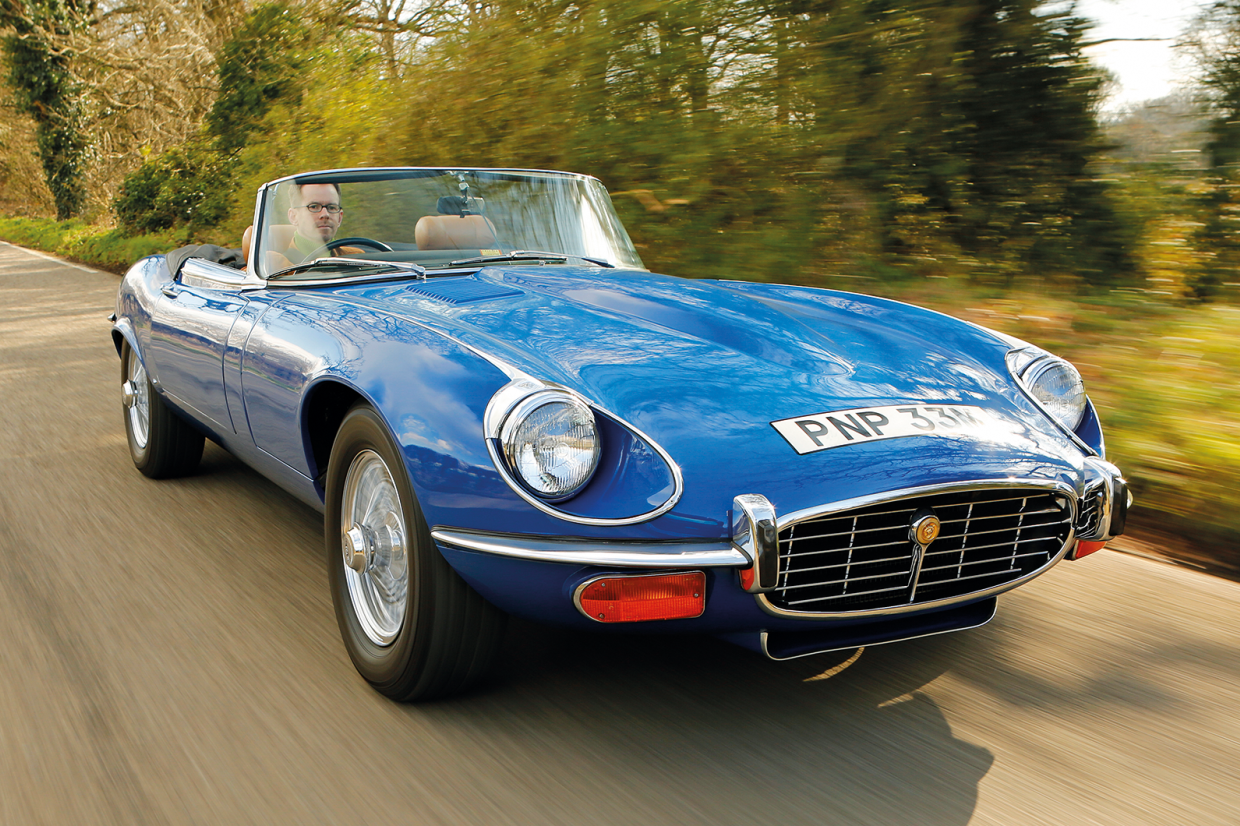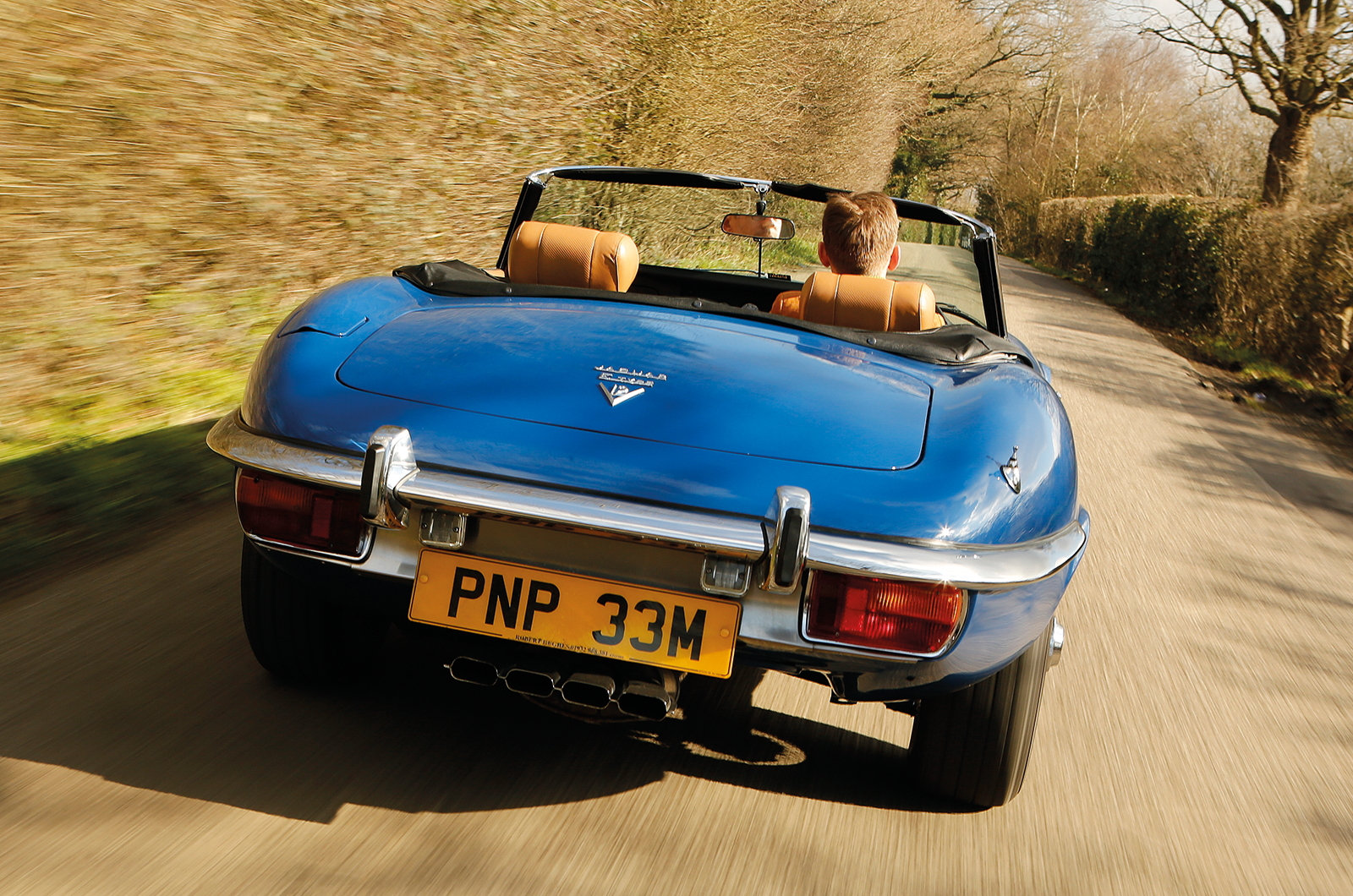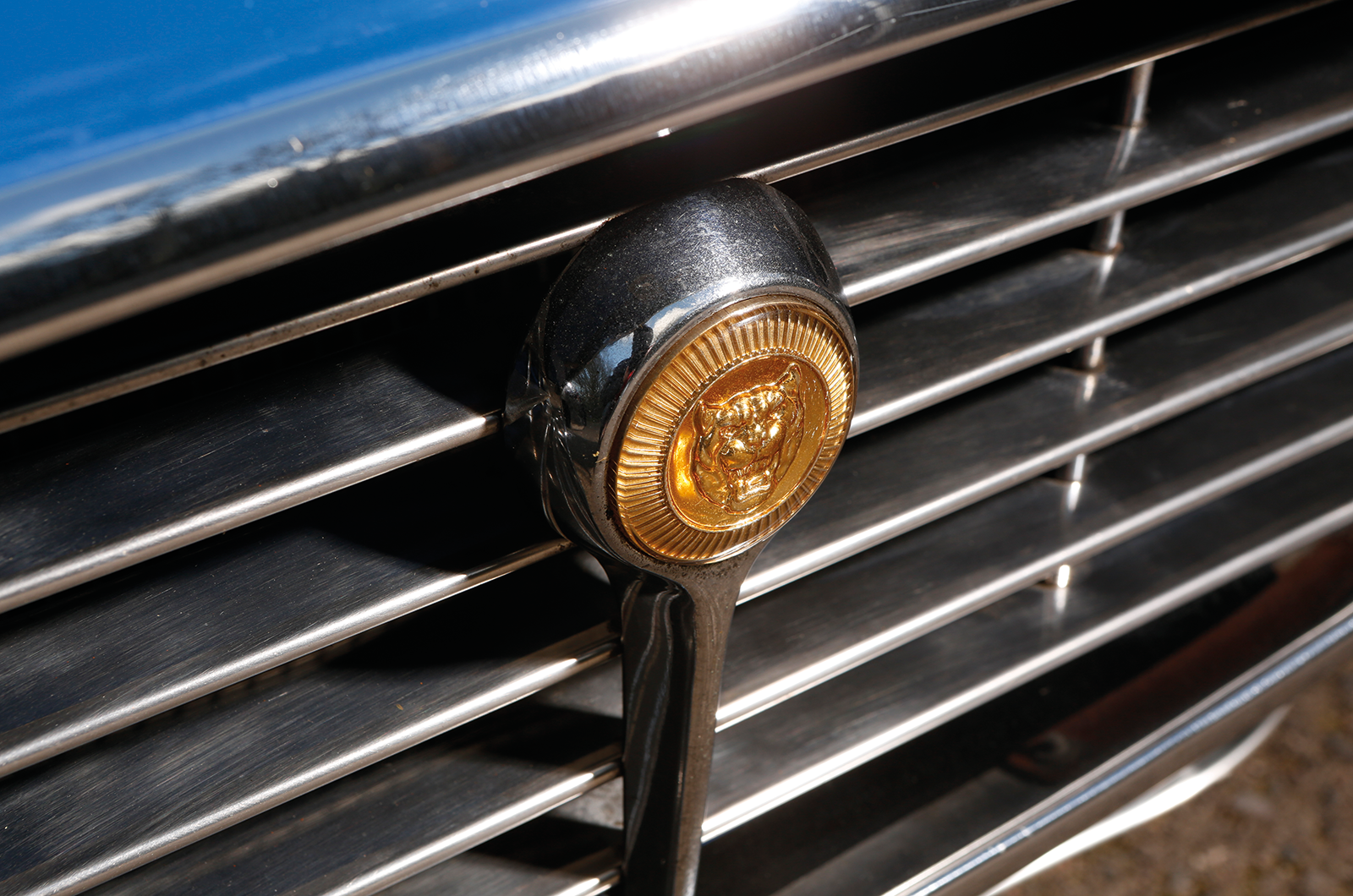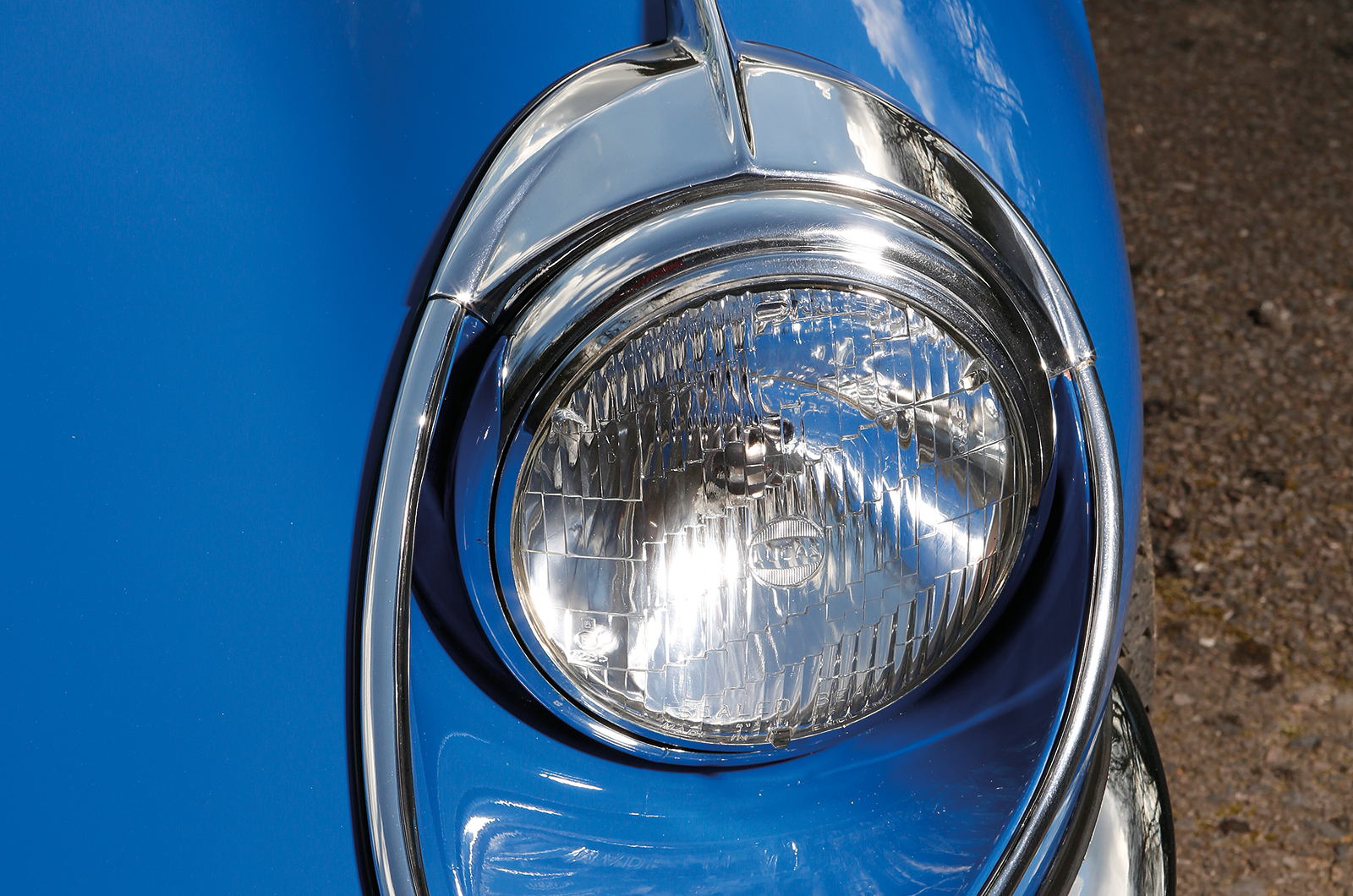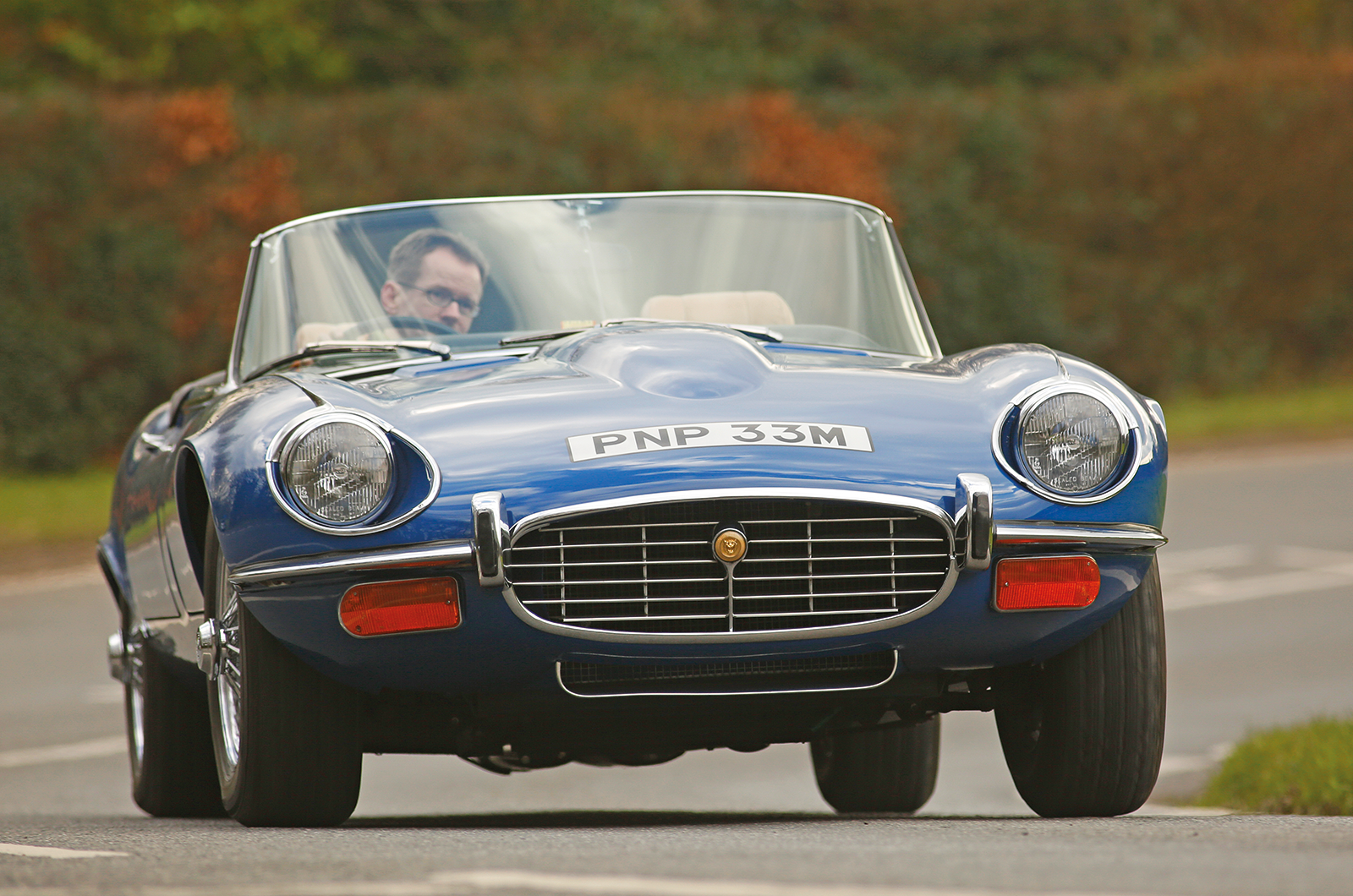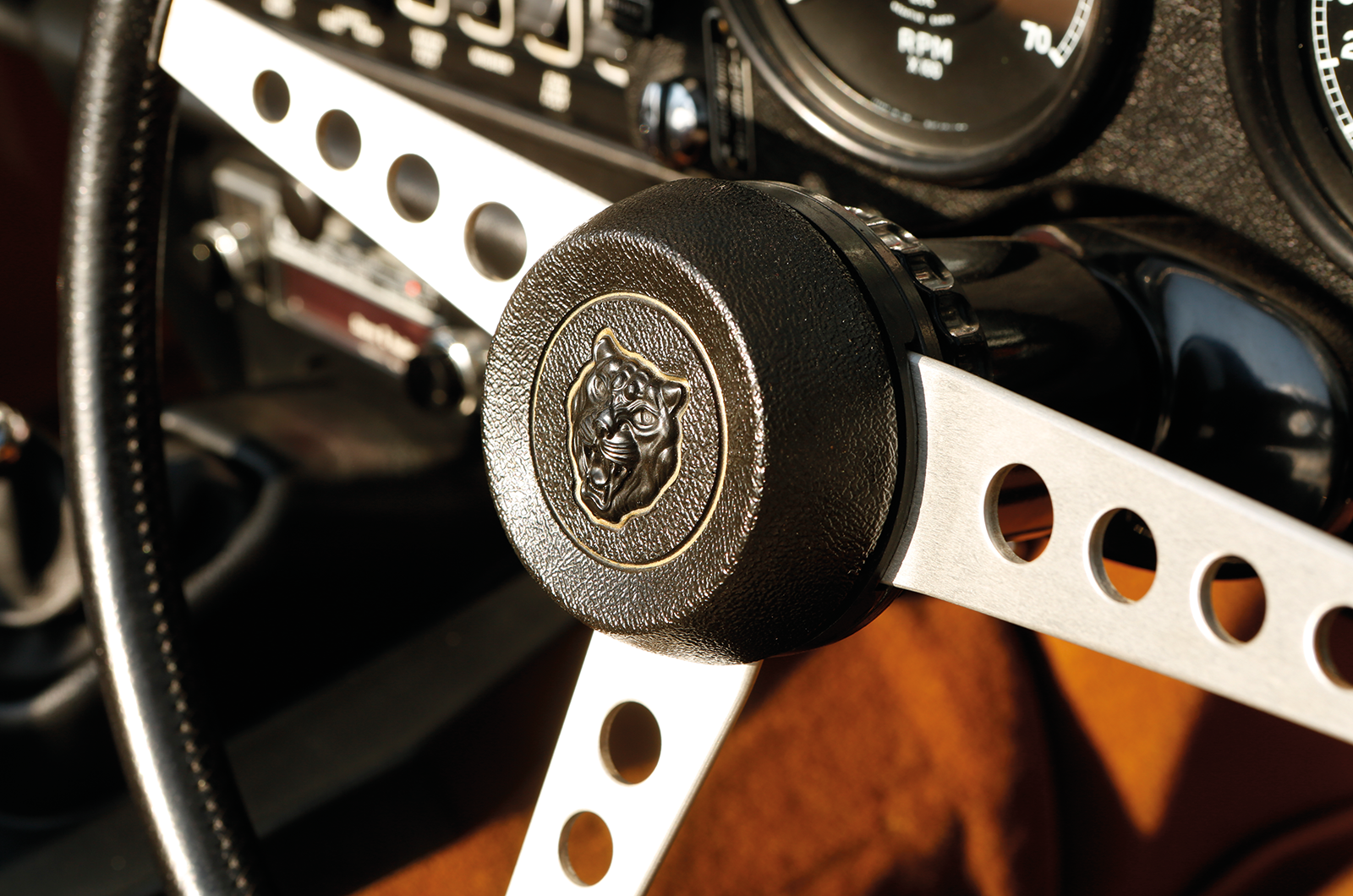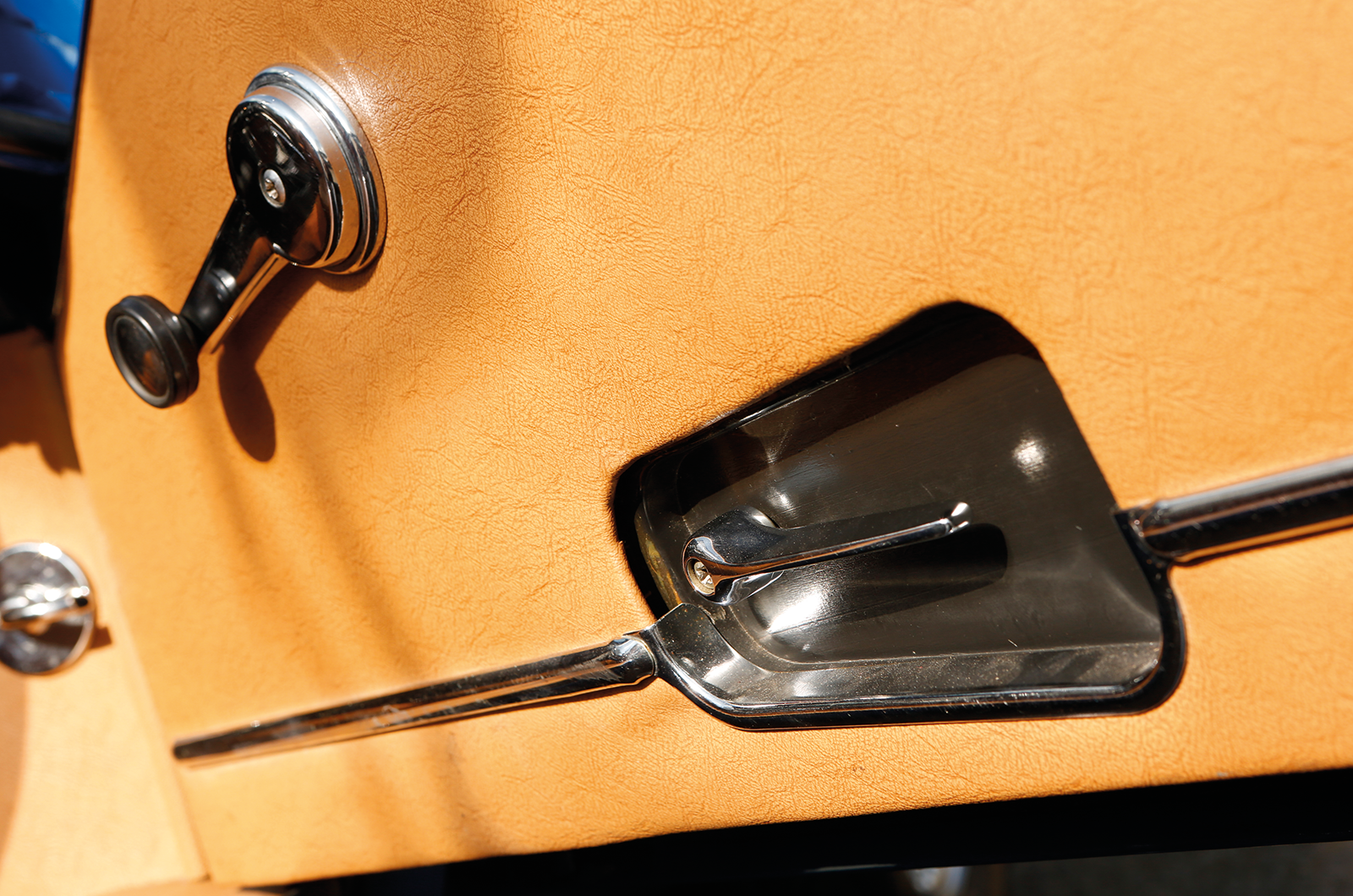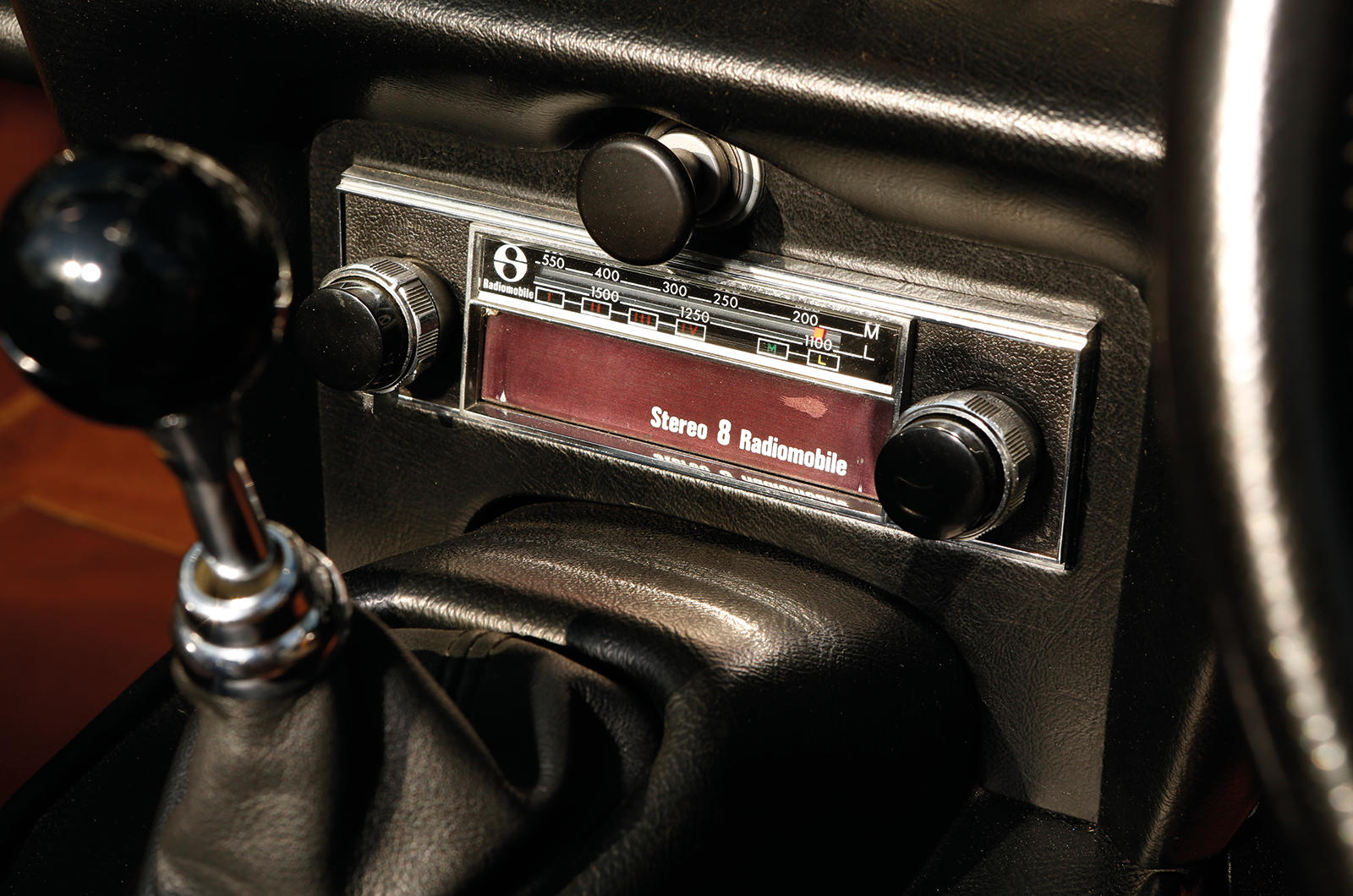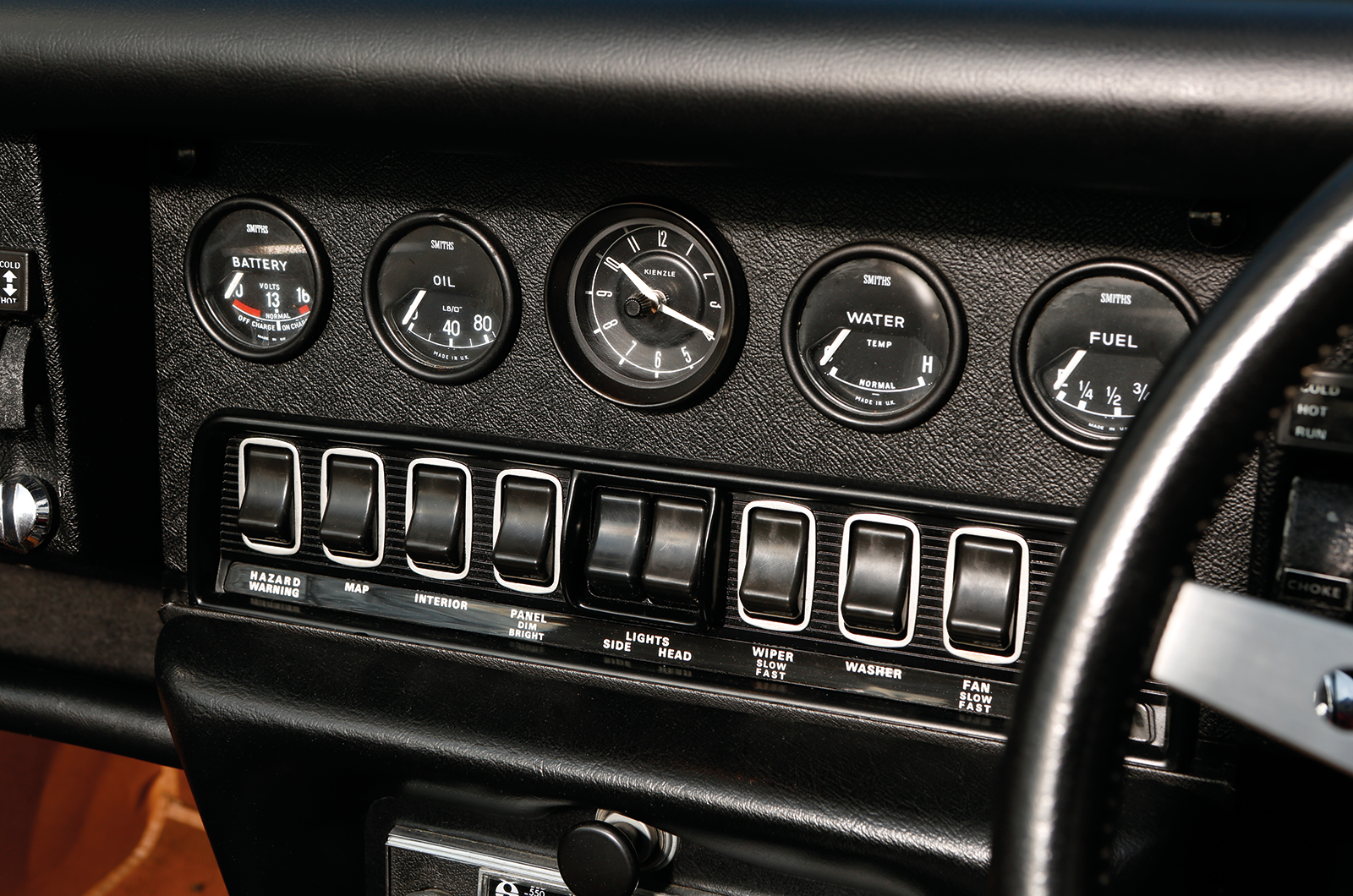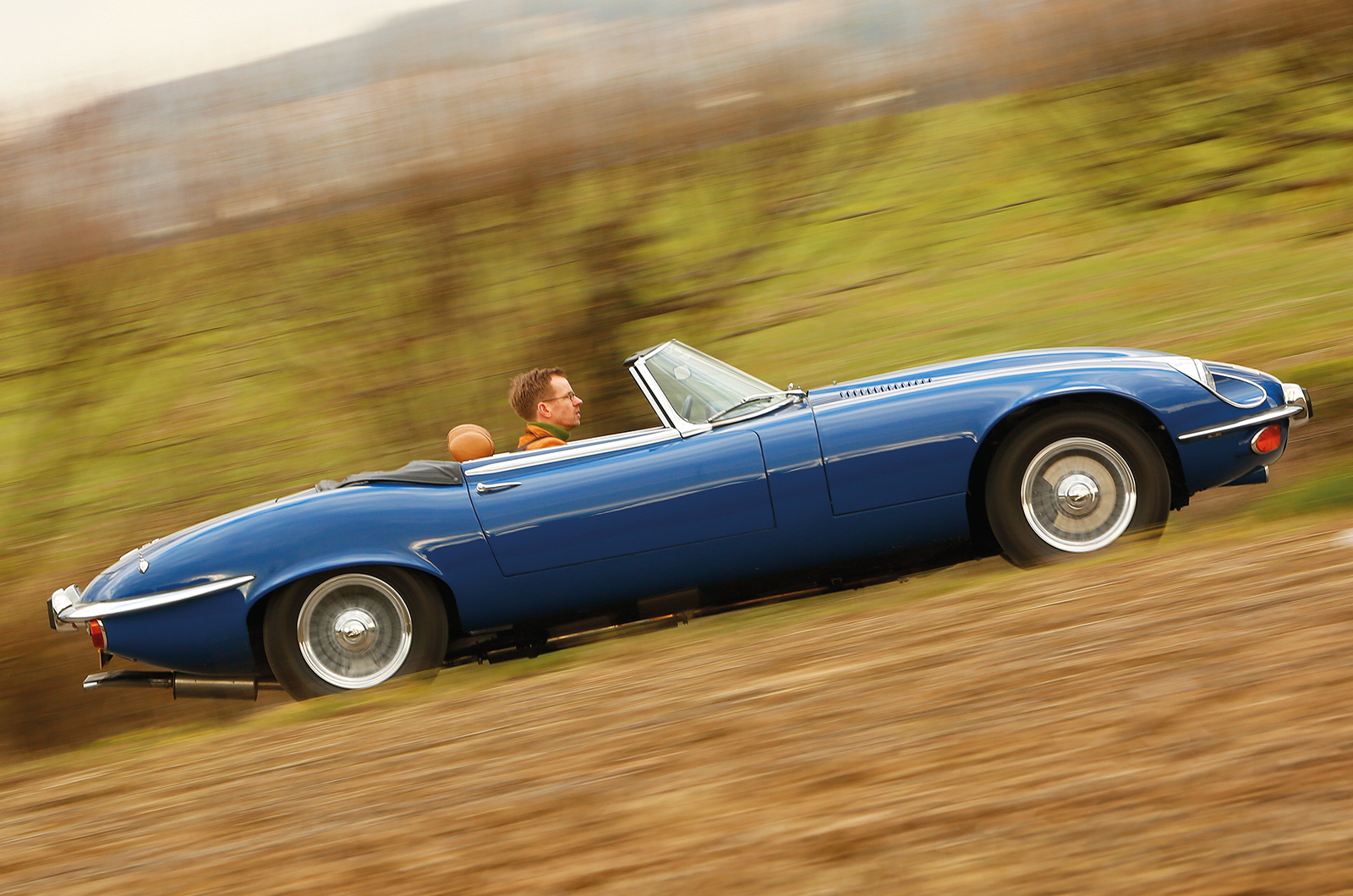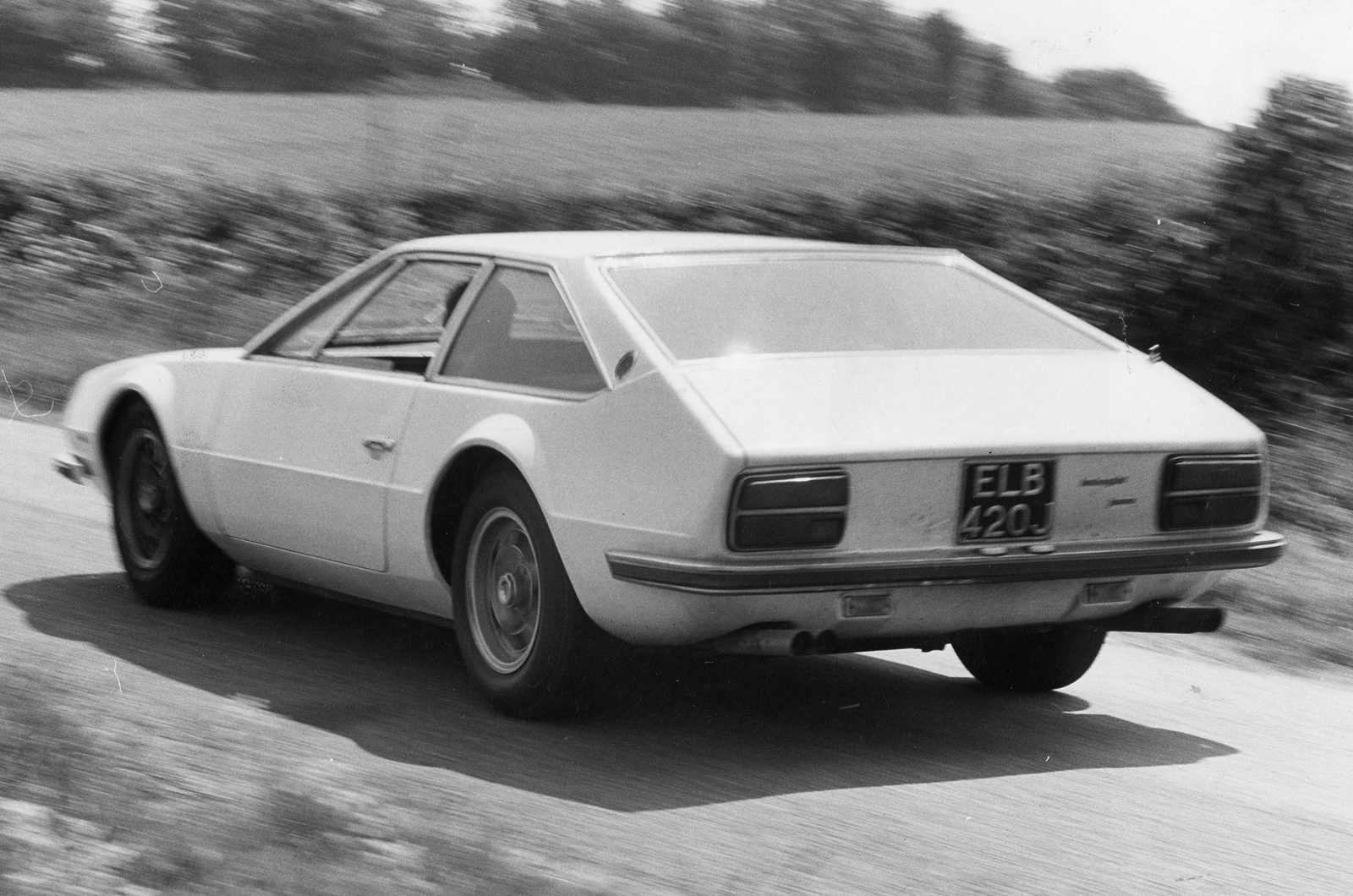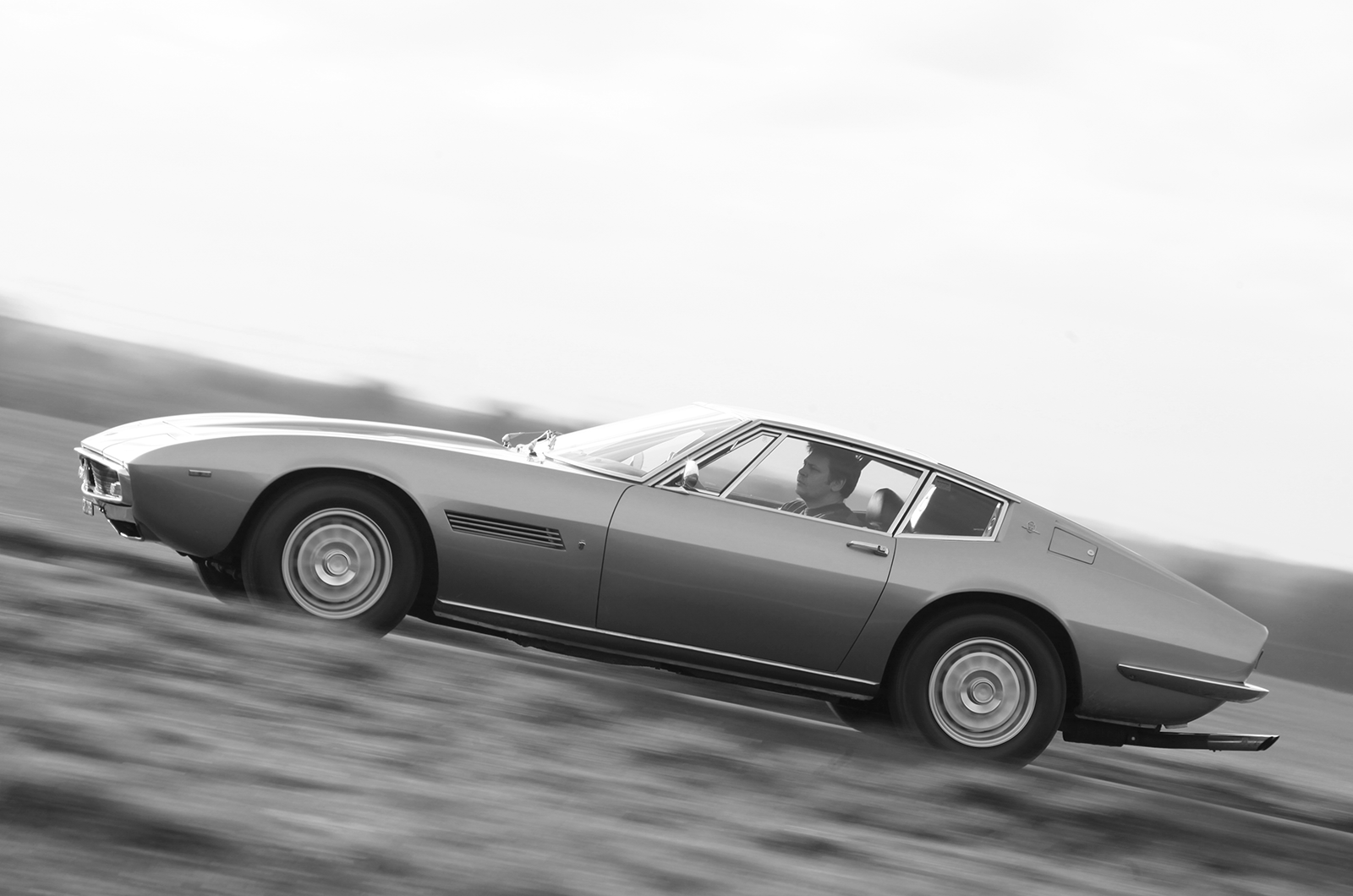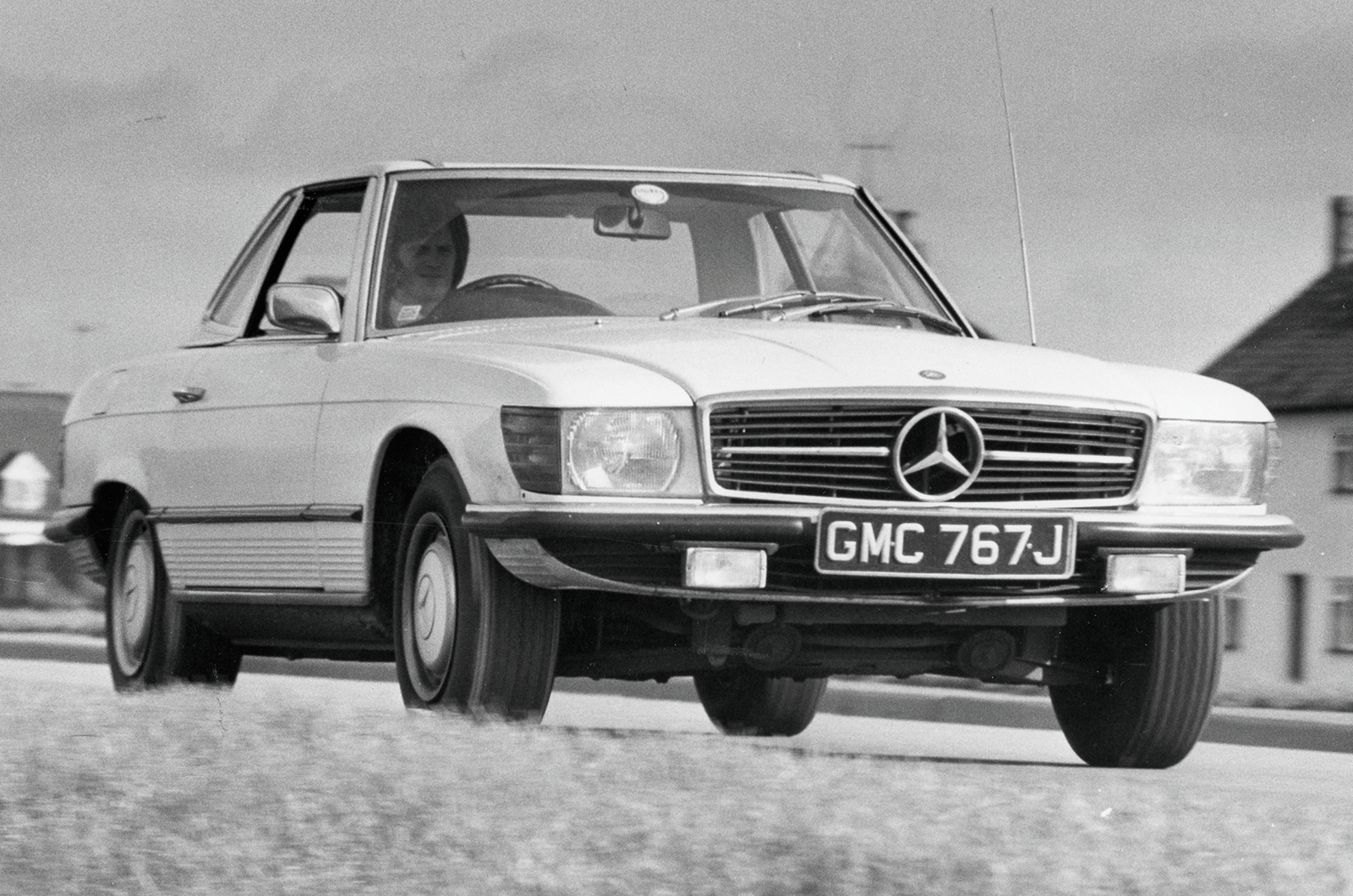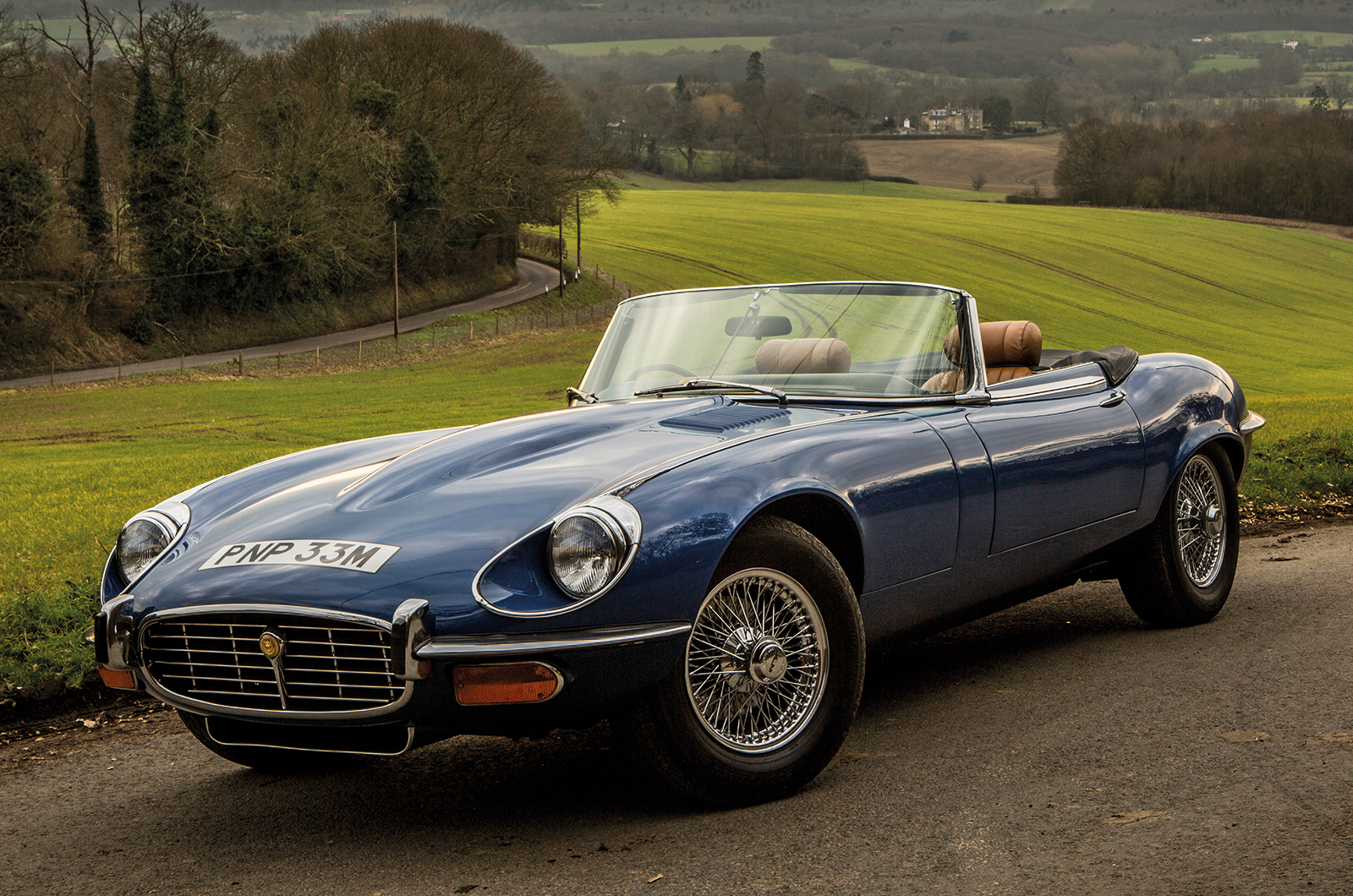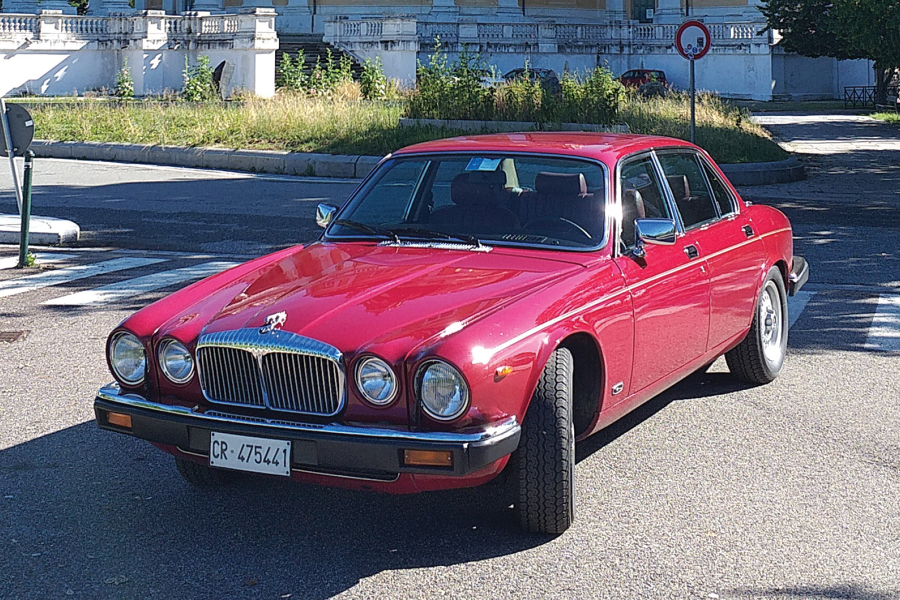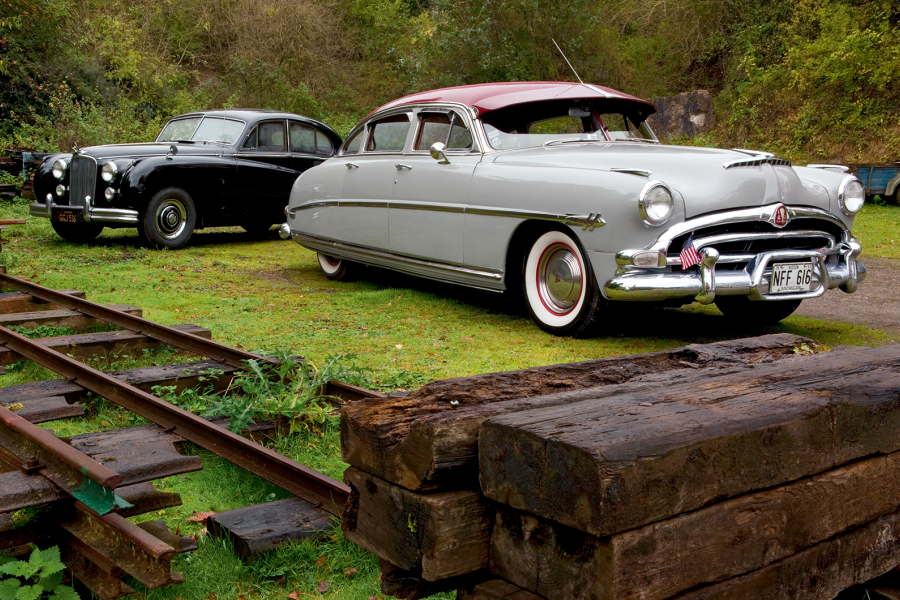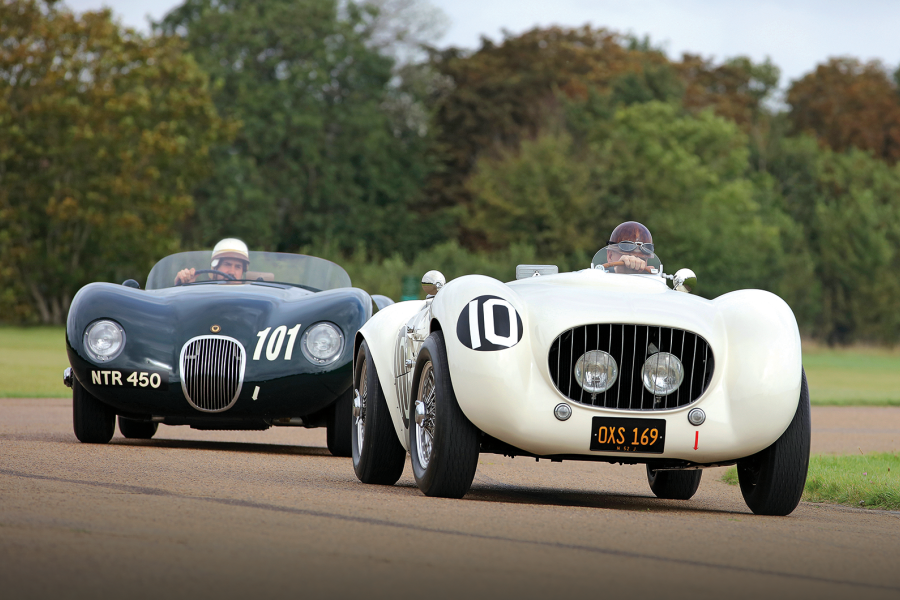“That said, on a recent 700-mile run to Edinburgh, the Jaguar returned its best-ever figure of 18.25mpg,” Hames continues.
“Fortunately, during the fuel crisis of 1973-’74, I was deemed to be an essential car user so I could get coupons, but being limited to only five gallons at a time meant that you had to visit one garage after another, sitting in a 50-yard queue each time.”
The fuel crisis, of course, did the E-type no favours.
In 1973, shortly before the OPEC embargo sent prices spiralling, Autocar had observed that the S3’s 18-gallon fuel tank could be emptied after less than three hours’ driving… and that replenishing it would cost a heady £7!
Almost overnight, however, that figure doubled.
Alan Hames and family with the yellow Jaguar E-type V12 in 1984
From S3s being much in demand and in some cases changing hands for over list price, finding homes for unsold cars suddenly became a whole new challenge.
“In 1971-’72, it wasn’t perceived as being a particularly thirsty car,” says Trevor Wooding of Hurst Park Automobiles, which specialised in low-mileage Jaguars at the time.
“When you think of what an Austin 3-litre or Vauxhall Viscount would have given you, it wasn’t all that bad, and people really wanted them because it was vastly improved compared to the six-cylinder models.
“But then from ’73-’74, fuel consumption suddenly became an issue. Like all big cars, they became very hard to sell.”
Tellingly, Wooding’s keeper is a lovely silver S3.
Despite a softer set-up than earlier E-types, the V12 is a pleasing machine to pilot on fast, sweeping A-roads
Today, fuel is not cheap, but, unless you’re planning to rack up a huge annual mileage, does it really matter?
The unassailable punch of this most magnificent of engines surely makes up for it.
And unless racing car dynamics are your thing, I doubt that you’ll ever find a decent S3 disappointing on the road.
“It was a good car,” says Dewis. “We didn’t have a very big budget – Lyons always kept a tight hold on spending – but nor was it a very difficult project.
“We modified the subframe and had to concentrate on damper settings, ride height, front wheel camber and suchlike, although it worked very well from the outset.
“It was more sophisticated and more comfortable than the earlier versions of the E-type. It was the right car for our market at that time.”
The Jaguar E-type V12’s updated styling has a more muscular stance than earlier cars, mainly thanks to its flared wheelarches
In today’s investor-fuelled environment, it’s a sentiment that resonates strongly with me.
Much as I love the V12’s six-cylinder forebears, would I pay vastly more than an S3 to own one?
I enjoy this car’s slightly louche, left-field appeal.
It’s a less obvious choice, and a far better car than most people would have you believe.
It’s also a comparative bargain. “I would never return to a Series 1 or 2,” concludes Hames, “and would recommend only the Series 3 to a potential purchaser.
“There is no other car that matches the charisma of the V12 and I would never sell mine, whatever the offer!”
Images: Tony Baker
Thanks to: John Marton; Alan Hames; Norman Dewis; Trevor Wooding; Hurst Park Automobiles; E-type UK
This was first in our May 2016 magazine; all information was correct at the date of original publication
Jaguar E-type V12: the rivals
The Jaguar E-type V12 went up against the Chevrolet Corvette C3 in the US
Chevrolet Corvette C3
If the V12 E-type was conceived primarily for the US market, the Chevrolet Corvette was its most obvious home-grown American rival – and the only one that came close on price.
Loud and brash compared to the Jaguar, the futuristic styling of its glassfibre shell made the E-type look dated.
The big-block 7.4-litre V8 could match the Coventry car’s performance, but not its refinement.
The short-lived Ferrari 365GTC/4 is another underappreciated classic car
Ferrari 365GTC/4
The Ferrari 365GTC/4 was the ‘affordable’ Daytona sibling.
It had a quad-cam 4390cc V12 that produced 340bhp and 312lb ft of torque.
It was good for 0-60mph in 6.5 secs and a 163mph top speed, but the engine needed plenty of revs before delivering the goods.
Understated and underrated, it cost three times as much as the E-type when new.
The V12-powered Lamborghini Jarama is a lot rarer than the Jaguar E-type Series 3
Lamborghini Jarama
A remarkably capable machine, the Lamborghini Jarama provided a decent compromise between sports car fun and GT refinement, coupled with a supple ride.
The 3.9-litre V12 produced a whopping 365bhp at a heady 7500rpm and 300lb ft of torque at 5500rpm, yet was more flexible than the figures suggest.
Built in minuscule numbers (just 327 in all), and fiercely expensive, they’re now super rare.
The Maserati Ghibli was designed by Giorgetto Giugiaro
Maserati Ghibli
Unveiled at Turin in 1966, the Maserati Ghibli featured an all-alloy, quad-cam, dry-sump 4.7 V8 boasting 306bhp (335bhp in the 4.9 SS) and stonking pace.
But this mightiest of Maseratis made do with a seemingly archaic live rear axle and had an eye-watering price tag.
A Spider was offered from 1969, while greater practicality was provided by its 2+2 sibling, the Indy.
The stylish and dependable Mercedes-Benz 450SLC was another Jaguar E-type V12 rival
Mercedes-Benz 450SL & SLC
Mass-produced sophisticate came in open and long-wheelbase closed guises.
The Mercedes-Benz 450SL and SLC were better made and more practical than the Jaguar, but lacked its appeal.
They turn few heads in this company, plus they are a tad dull to drive, but utterly dependable.
Unburstable V8 engines offered the least performance here, but 136mph was far from shabby.
Factfile
Jaguar E-type V12
- Sold/number built 1971-’74/7990
- Construction steel monocoque
- Engine all-alloy, sohc-per-bank 5343cc 60º V12, four Zenith Stromberg carburettors, Lucas Opus electronic ignition
- Max power 272bhp @ 5750rpm
- Max torque 304lb ft @ 3500rpm
- Transmission four-speed manual or Borg Warner three-speed auto, driving rear wheels
- Suspension independent all round, at front by double wishbones, torsion bars rear fixed-length driveshafts, lower transverse links, radius arms; coil springs (twin coil-overs at rear), telescopic dampers, anti-roll bar f/r
- Steering power-assisted rack and pinion
- Brakes discs all round, ventilated at front, solid inboard at rear, with servo
- Length 15ft 4½in (4685mm)
- Width 5ft 6in (1679mm)
- Height 4ft (1219mm)
- Wheelbase 8ft 9in (2667mm)
- Weight 3316lb (1505kg)
- 0-60mph 6.3 secs
- Top speed 143mph
- Mpg 15
- Price new £3743
Enjoy more of the world’s best classic car content every month when you subscribe to C&SC – get our latest deals here
READ MORE
Transatlantic tussle: Chevrolet Corvette vs Jaguar E-type
Egal E-type: thunder cat
Which is the greatest Jaguar E-type of them all?
Malcolm Thorne
Malcolm Thorne is a contributor to – and former Deputy Editor of – Classic & Sports Car
